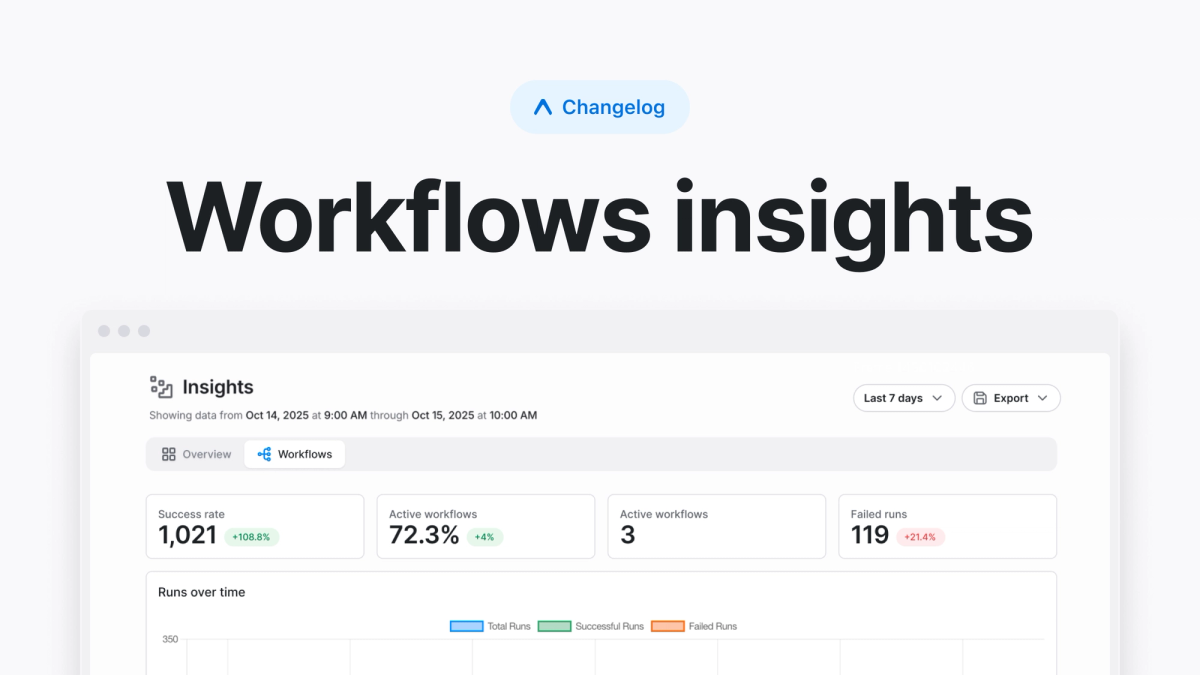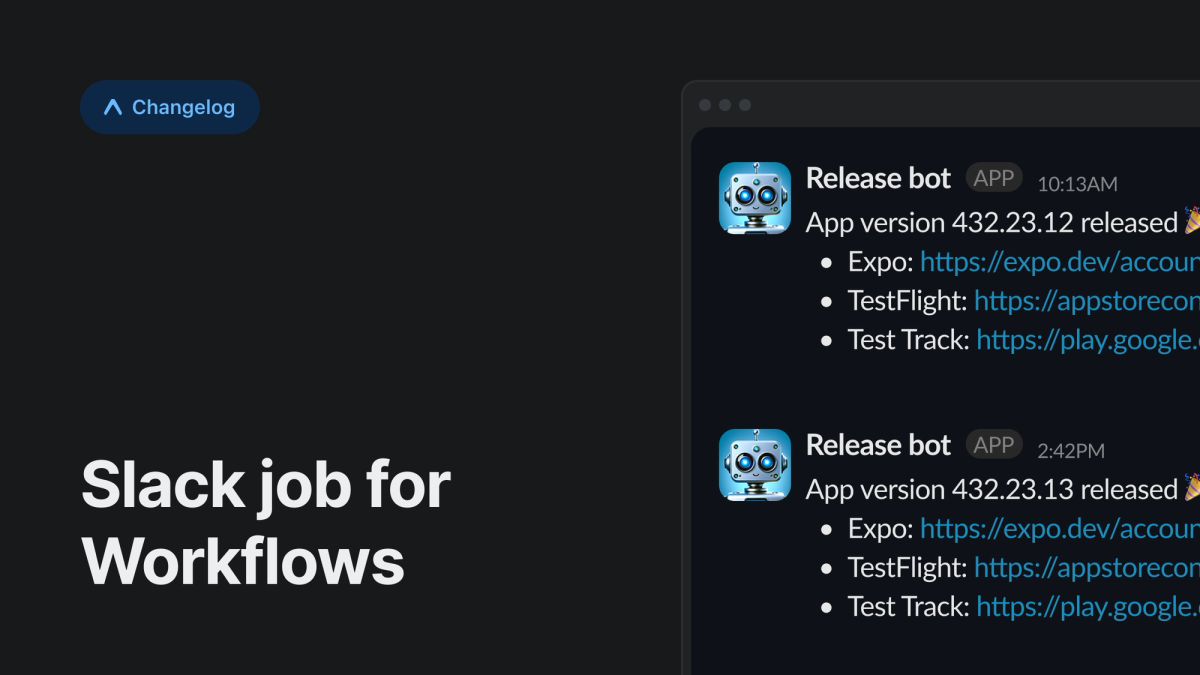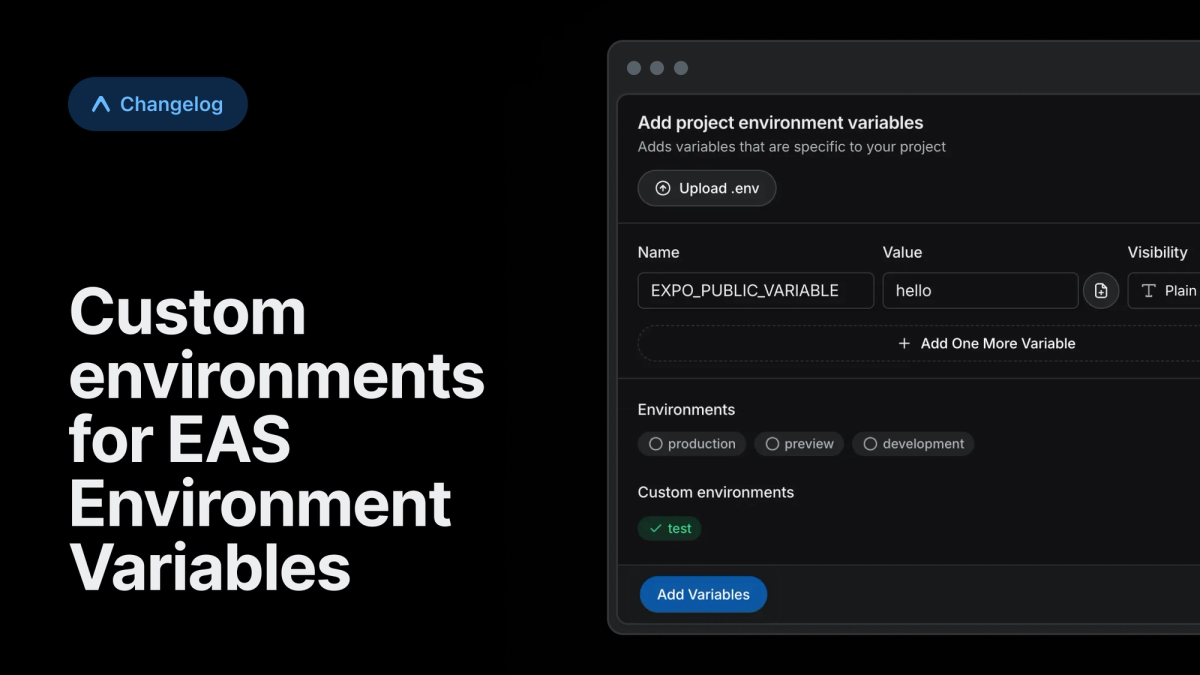Changelog
New updates and improvements to Expo and EAS.
Workflows insights
Dec 15, 2025 by
Ash Wu
Workflows insights aggregates data from all of your workflow runs in the insights tab on the Expo dashboard. You can monitor key metrics like success rates, active runs, and failure counts, while observing trends over time to understand how your workflows are performing.

Slack job type for Workflows
Dec 10, 2025 by
Stanisław Chmiela

[Updated] Mitigating Multiple Security Vulnerabilities in React Server Components
Dec 5, 2025 by
Phil Pluckthun
Vojtech Novak
Here's what you need to know when it comes to if your Expo app is affected by recent security vulnerabilities in React Server Components and how to upgrade it to stay protected.
Require Two-Factor Authentication for Organization Members
Nov 24, 2025 by
Byron Karlen
Organizations on Production and Enterprise plans can now require members to enable two-factor authentication (2FA). For organizations with SSO enabled, this requirement only applies to non-SSO users.
Custom environments for EAS Environment Variables
Nov 21, 2025 by
Kadi Kraman
